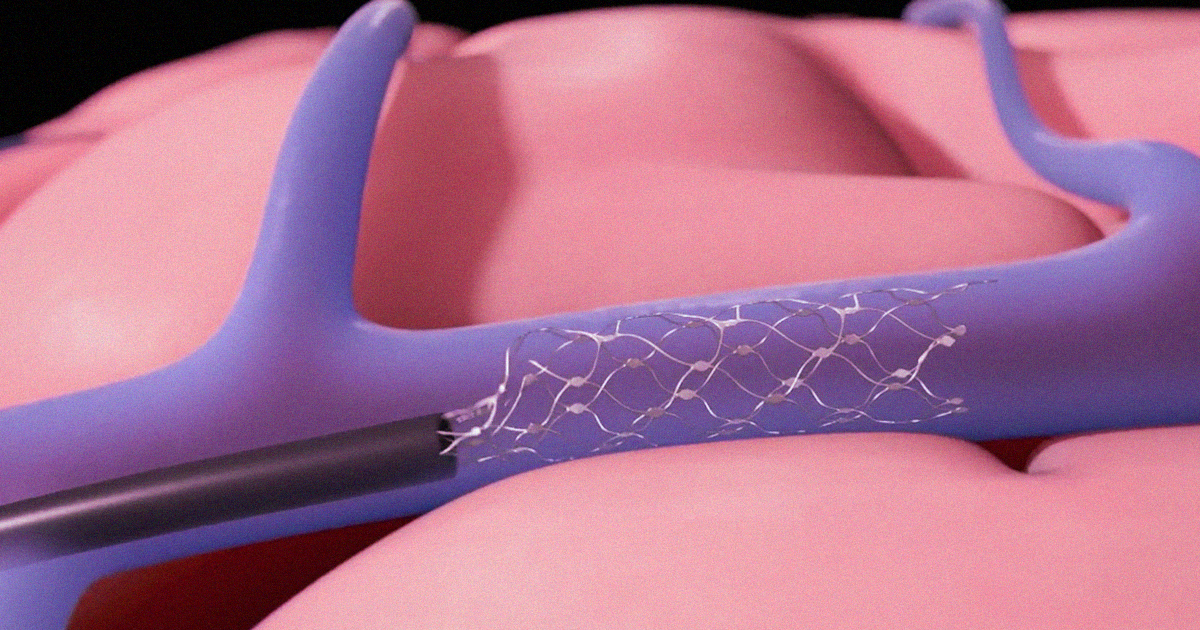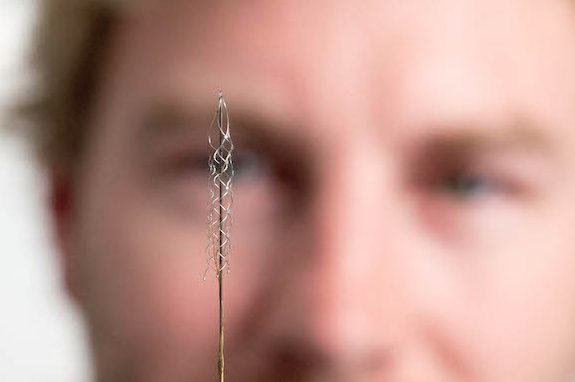Aussie researchers are recruiting five people with severe paralysis to test an experimental device connecting the brain to a computer in a bid to harness the power of mind over matter.
It could help people who are paralysed to move, communicate and interact with their environment just by thinking about it, scientists say.
Known as the Stentrode, the device has been referred to as a bionic spine because of its potential to help paralysed patients move again.
But its creator—interventional neurologist and Synchron Chief Executive Associate Professor Thomas Oxley—envisions an even bigger picture.
THE POWER OF THOUGHT
The Stentrode is roughly the size of a paper clip.
It consists of a small metal mesh tube (or stent) with electrode contacts within the structure.
Doctors plan to insert the device inside a blood vessel in the area of the brain responsible for movement—the primary motor cortex.
Thomas says the idea for the Stentrode emerged from the US defence force developing a robotic limb for injured soldiers.
“The problem was how do you get the soldier to control the robotic limb? You need a control mechanism straight out of the brain,” he says
It led to Thomas receiving funding from the US Defense Advanced Research Projects Agency.
“When we started out on this project 5 or 6 years ago, back then, it was pretty science fiction the concept that we would be putting a chip into the brain to try and connect it to a computer,” he says.

TRAINING THE BRAIN
Thomas has teamed up with The Royal Melbourne Hospital for the clinical trial.
The insertion of the device is expected to be relatively quick, with patients awake during the procedure and out of hospital the same day.
Thomas says patients will rest for a few weeks before he and the team “load up our training program”.
“Our software that we’ve built is basically a training program for the patient to learn how to achieve that control,” he says.
Thomas says the team will work with the patients for months.
“It’s a very involved trial. The patients will have to be very motivated, very enthusiastic,” he says.
“IT’S KIND OF LIKE TRAINING TO LEARN A NEW LANGUAGE OR A NEW SKILL.”
While it’s not quite Neo learning kung fu in a matters of seconds in The Matrix, it’s a futuristic concept to wrap your head around.
MIND OVER MATTER
If the Stentrode is shown to be safe, Thomas says the research will progress to a worldwide clinical trial ahead of Food and Drug Administration (FDA) approval.
In the long term, Thomas envisions patients using the device for communication, such as sending text messages, writing emails or using word processing.
He sees patients tapping into smart home and work technology to control their environment, such as changing the temperature or lighting.
But the most significant application will likely be mobility, Thomas says.
“That’s the range of devices that will allow patients to move again,” he says.
“The exoskeleton would be a perfect example. You would put on a sleeve or a jacket or a pair of pants that have their own motors in them, and you then control the movement of those arms and legs straight out of your brain.”
So will everyone one day have the power to control the world with a device implanted in their brain?
“If it’s to happen … the system will have to provide a superior ability to interact with technology to what an able-bodied person can achieve,” Thomas says.
“The way I think that will happen is through speed.”









